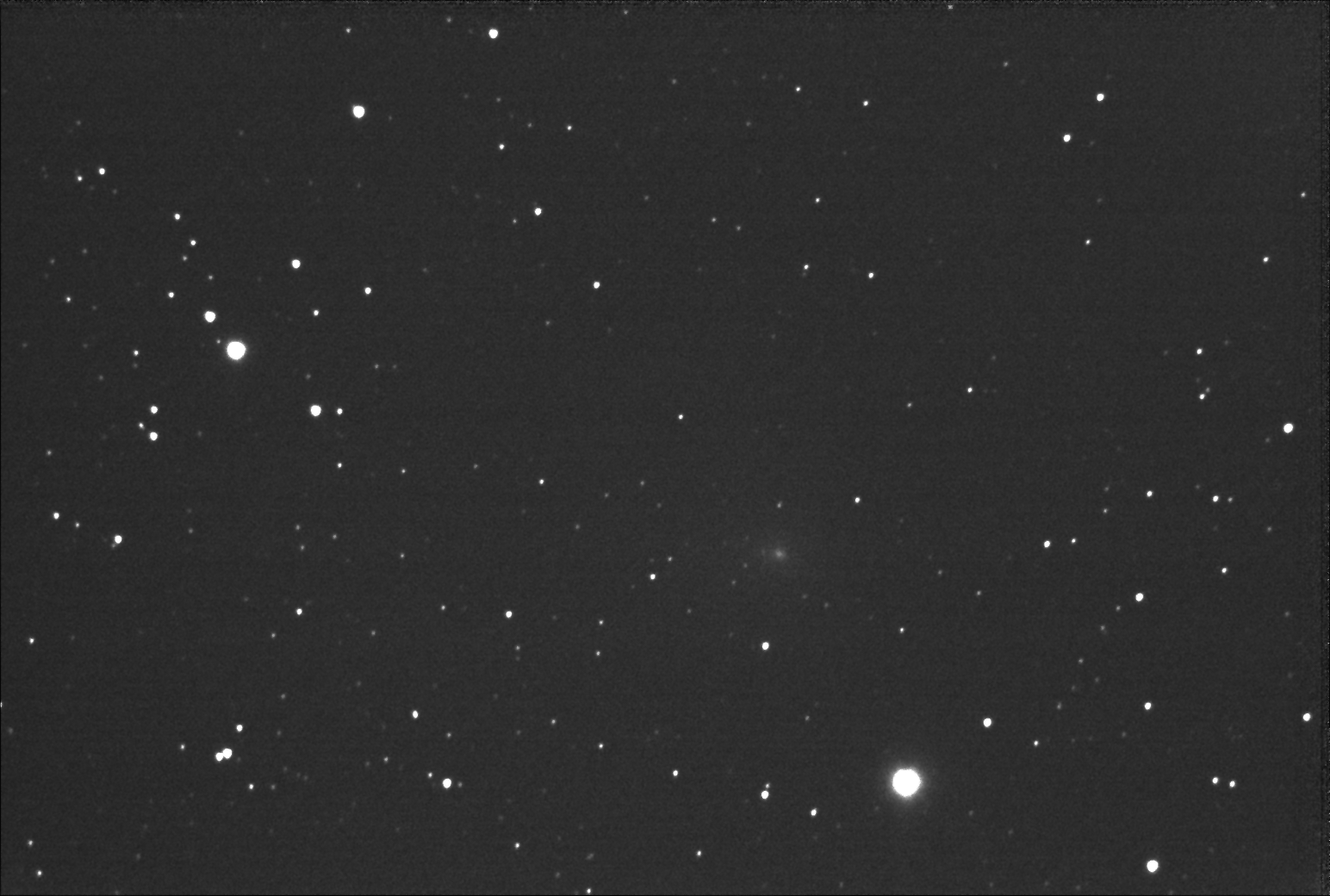Observation by David Swan: C/2017 O1 (ASASSN)
Uploaded by
David Swan
Observer
David Swan
Observed
2017 Oct 09 - 19:41
Uploaded
2017 Oct 10 - 10:59
Objects
C/2017 O1 (ASASSN)
Planetarium overlay
Constellation
Perseus
Field centre
RA: 04h35m
Dec: +45°07'
Position angle: +138°57'
Field size
0°16' × 0°11'
Equipment
- Scope: 200mm SCT at f/6.3
- Camera: ASI178MM. Baader UV/IR cut
- Software: Firecapture and DeepSkyStacker
Exposure
20 x 5s
Location
Tynemouth, UK
Target name
C/2017 O1 (ASASSN)
Title
C/2017 O1 (ASASSN)
About this image
Time stated is midpoint of capture and is UT. This is a stack of just 20 frames, so the comet isn't smeared by its motion against the background stars. David
Files associated with this observation
Like this image
Comments

David,
Comets are like asteroids, they tend to be moving quickly through a star field when they are at their brightest because they are close to Earth. So with your last few images of Comet ASASSN you have had to make several choices; let the comet move across the star field and be blurred, track on the comet and have star trails in the image or take very short exposures and not many images to keep the comet/stars from trailing but at the expense of a dim comet. All these solutions create a "real" image of the comet in it's natural environment. Very seldom can one track on a comet because they are not bright enough so you have to take many images with exposures that do not show a blurred comet, then you have to determine the X,Y movement of the comet from image to image and adjust each image for the comet movement (measure the X,Y of the same reference star in each image and subtract or add the X,Y movement of the comet for the given time of that image based of your reference star from the initial image then stack the resulting X,Y adjusted images on the comet), this allows you to not have to track the comet and it also makes up for any errors in your tracking from image to image. The result is a nice, bright comet in a field of streaked stars, a "real" image of the comet. Of course, you can make a fake image of the comet by taking your results from above and removing the comet from the streaked star field, go into photoshop or some other software and make the comet look real nice (fake), then generate a luminance image of the star field that the comet use to be in, re-insert that pretty comet back into that nice clean luminance image and you now have an image of the comet in a static star field, looks pretty but it no longer reflects reality.
Keep up the good work,
Cheers, Mike
Copyright of all images and other observations submitted to the BAA remains with the owner of the work.
Reproduction of work by third parties is expressly forbidden without the consent of the copyright
holder. By submitting images to this online gallery, you grant the BAA permission to reproduce them in
any
of our publications.


